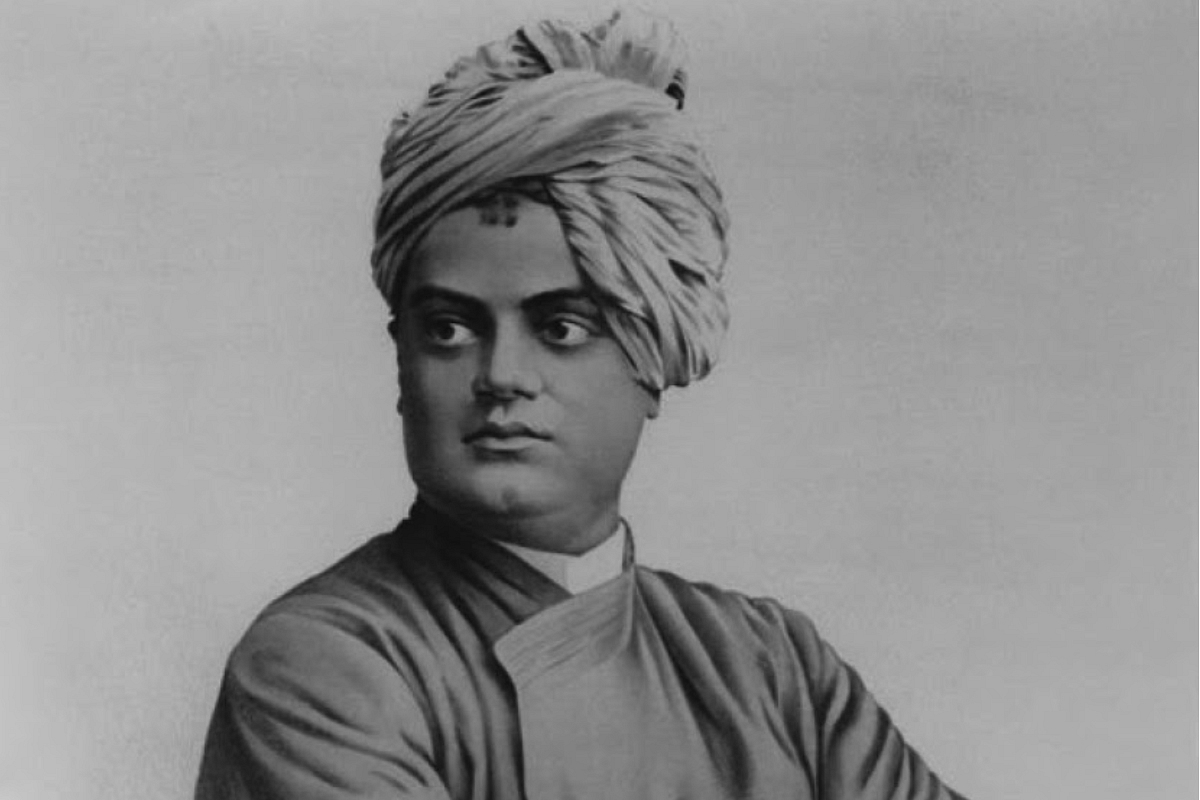Ideas
How Bhagavad Gita Provided The Ideological Foundation For India's Freedom Struggle

Swami Vivekananda. (Representative image)
To grasp the significance of the Bhagavad Gita in the Indian Freedom Movement, one must inquire why illustrations and sculptures depicting the famous Gita scene were scarce before the 14th century.
Not that the Gita was not known, commentaries on Gita have been written by almost every important teacher of Vedanta. But there are no popular depictions.
The answer most probably is that Gita was a Vedantic text. It was a text for the spiritually-inclined and the spiritually-mature.
Then how did it suddenly become so popular?
The answer is in the Bhakti movement.
It was an excommunicated Brahmin boy, Gyaneshwar, who wrote the commentary in a regional language in Maharashtra that started the dissemination of Gita among the masses. It is not the literal text of commentary but the fact that a commentary on Gita was written for the people in the language of the people, that started an accelerated dissemination of the scripture.
What Gyaneshwar started soon became a movement. From Gyaneshwar to Tukarama — the movement of Bhakti also became a movement of the networks of various communities. It cemented variously inclined groups into one Dharmic supra-community — not homogenous but organically networked.
It is from this network that Chhatrapati Shivaji’s Hindavi Swarajya emerged. It is this Hindavi Swarajya that in turn set the base for the struggle for freedom in modern India.
By the end of 18th century we have Gita as a prescribed text and verses explaining Gita in South Indian Tamil Vedanta monasteries. A 17th century chieftain of Southern Tamil Nadu wrote a lullaby based on Gita. The context was, when his daughter did not have children he made a Krishna doll and sang Gita-lullaby to that idol of Krishna.
From a text of high philosophical discussion it became a scripture of the common people. In a way that was what the Gita was for. The transformation of every work into yajna. It proclaimed that spiritual liberation is possible for everyone irrespective of their work, caste, gender, social disadvantages not withstanding.
With the arrival of modern age, the message of Gita became even more relevant. Even as the Gita spread throughout India, India itself was being made to suffer colonialism — not just political but civilisational.
It was in such a setting that Tilak came out with his Gita Rahasya. Swami Vivekananda gave his talks on Gita. Bharati of Tamil Nadu wrote its translation. Sri Aurobindo wrote his Essays On The Gita. Gandhi wrote his commentary on Gita with inputs from Vinoba Bhave. Netaji Subash Chandra Bose carried a Gita with him.
The spiritual liberation that Gita spoke about started reflecting in all the planes of existence, including the social and political. Thus, the Bhagavad Gita truly became the song of liberation and a complete revolution. Not a violent, short-lived revolution like others, but a sustained evolution that transforms the society and the individual.
Support Swarajya's 50 Ground Reports Project & Sponsor A Story
Every general election Swarajya does a 50 ground reports project.
Aimed only at serious readers and those who appreciate the nuances of political undercurrents, the project provides a sense of India's electoral landscape. As you know, these reports are produced after considerable investment of travel, time and effort on the ground.
This time too we've kicked off the project in style and have covered over 30 constituencies already. If you're someone who appreciates such work and have enjoyed our coverage please consider sponsoring a ground report for just Rs 2999 to Rs 19,999 - it goes a long way in helping us produce more quality reportage.
You can also back this project by becoming a subscriber for as little as Rs 999 - so do click on this links and choose a plan that suits you and back us.
Click below to contribute.
Latest